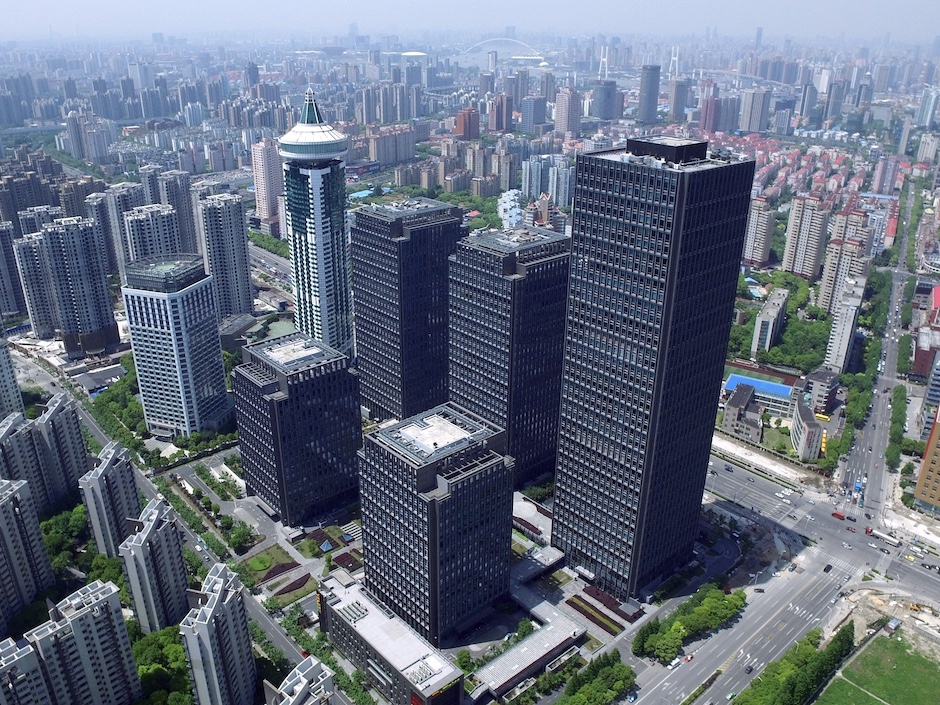22 Feb 2022
As the world’s largest developing economy, China has been rapidly increasing urban construction over the past four decades. As a result, a significant amount of construction and demolition (C&D) waste is being generated, not only from new construction but also from building refurbishment activities.
In a paper recently published in Environmental Science and Pollution Research, researchers from Xi’an Jiaotong-Liverpool University provided valuable insights for managing C&D waste and reducing carbon emissions in building refurbishment projects.
As building refurbishment is a priority in the Chinese government’s sustainable development strategy, such projects are expected to increase in the foreseeable future. This makes the management of carbon emissions vital.
The paper analyses three scenarios using different waste management strategies in a building refurbishment project in Suzhou, China. The researchers found that by upcycling generated waste to use as substitutes for raw materials, carbon emissions can be significantly reduced.

Traditional practice
According to Dr Jian Li Hao, of XJTLU’s Department of Civil Engineering, in the first scenario of business-as-usual for C&D waste management in China, most of the waste is disposed of and only high-value materials such as metals will be collected and recycled.
“In this case, only aluminium is recycled during the whole process, while other kinds of waste are sent to landfills. For building refurbishment, new materials are produced from raw materials by a local manufacturer.
“Currently in China’s building industry, raw materials are still the main source for construction material production,” says Dr Hao.
Recycle to improve
Based on the open-ended 3R (reduce, reuse, and recycle) strategy of the linear economy, which is described as “take-make-consume-dispose”, the second scenario attempts to prevent C&D waste from ending up in landfills.
“In scenario two, waste is separated for recycling and incineration, improving the effectiveness of C&D waste management,” Dr Hao says. “Aluminium, cement mortar, concrete and glass are all recycled, while plastic waste is incinerated for energy recovery.”
However, new materials for refurbishment are still produced from raw materials. Like scenario one, this scenario falls into the linear economy, relying largely on the consumption of raw materials in an unsustainable way.
In fact, although scenario two has fewer carbon emissions than scenario one, the difference is not significant, showing only a 10% reduction in overall emissions.
From cradle to cradle
The most significant change occurs in the third scenario, in which carbon emissions are reduced by around 40% compared to scenario one. What makes the difference is that, instead of producing from raw materials, the refurbishment materials are upcycled from the waste generated in the previous dismantlement.
“The refurbishment material creation stage generates the highest carbon emissions compared to other stages like dismantlement and refurbishment construction,” Dr Hao says. “Carbon emissions can be effectively reduced by using secondary materials, even if only part of the raw material is replaced.”
For example, aluminium for materials like window frames contributes the highest carbon emissions in refurbishment. By replacing 30% with recycled aluminium, about 26% of carbon emissions generated by frame production is avoided.
“It can be described as a ‘cradle to cradle’ lifecycle, in which the downstream waste produces new upstream material in a regenerative system,” explains Dr Hao.
“This scenario applies to the circular economy strategy, where resource input, waste, emissions, and energy leakage are minimised by narrowing material and energy loops.
“The circular approach not only minimises the amount of C&D waste that ends up in landfills but also reduces the demand for raw construction materials,” she says.
Necessity of a circular economy
“Currently, there’s still a large amount of C&D waste disposed at landfills with a low recovery rate. Only about 30% of C&D waste is recycled globally, while the rate is less than 10% in China,” says Dr Hao.
“The construction industry today is considered a linear economy. The demand for raw materials is still growing, and this has a serious effect on the environment.
“In this context, the concept of a circular economy can provide new perspectives and strategies to address today’s challenges.
“Also, mitigating the carbon emissions of building refurbishment C&D waste is vital to achieving carbon neutrality goals in China's building sector,” she says.

The research team consists of Wenting Ma, Dr Jian Li Hao, and Dr Cheng Zhang from XJTLU, and Luigi Di Sarno and Adam Mannis from the University of Liverpool.
The paper, ‘Evaluating carbon emissions of China's waste management strategies for building refurbishment projects: contributing to a circular economy’, is available online here.
Researcher bio:
Dr Jian Li Hao is a Senior Associate Professor in the Department of Civil Engineering, Xi'an Jiaotong-Liverpool University. Her research mainly lies in sustainable construction engineering and management. Her research interest covers construction waste management, zero carbon buildings, embodied building energy efficiency modelling, life cycle assessment for infrastructures and buildings, prefabricated construction projects, lean construction.
By Yi Qian
Edited by Patricia Pieterse
22 Feb 2022
RELATED NEWS

COVID's environmental impact: positives and negatives
Since the beginning of the COVID-19 pandemic, people worldwide have felt the effects of its rapid spread – citywide lockdowns, travel restrictions and strict...
Learn more

How to better cope with disasters as a community
When faced with natural disasters like earthquakes and tsunamis, a community’s resilience – the ability to prepare for, cope with, and recover from shocks an...
Learn more







